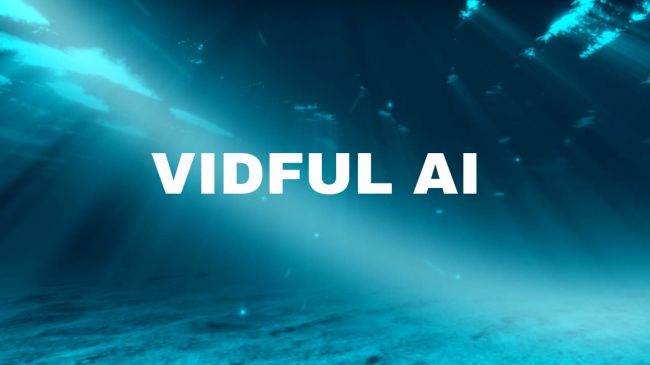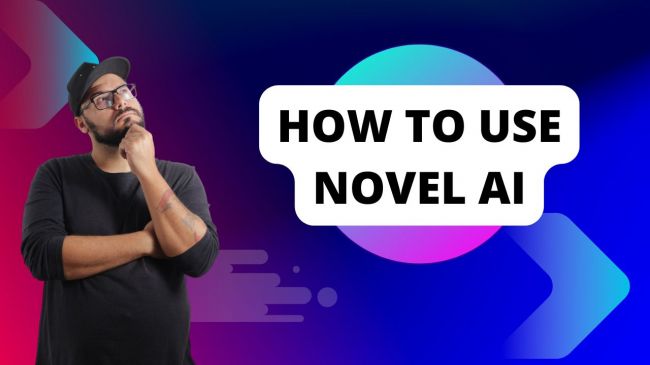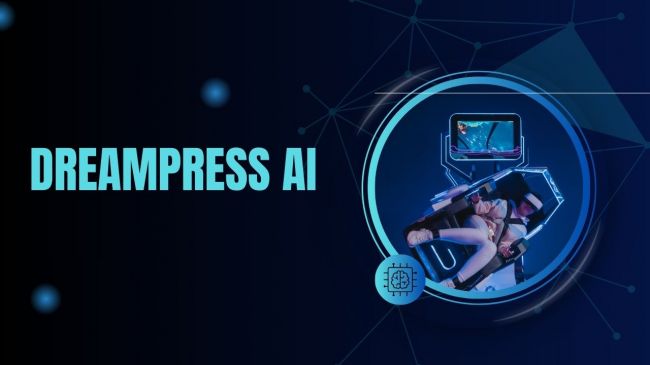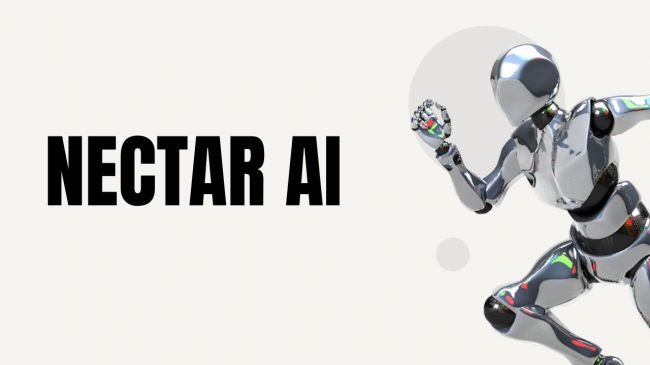On This Page
- Why I Started Using Akool AI for My Content
- Who I Believe Akool AI Is Perfect For
- The Moment I Realized Akool’s Face Swap Isn’t Just a Gimmick
- Why I Trust Akool’s Talking Avatars for Brand Storytelling
- How I Use Akool’s Video Translation to Reach Global Audiences
- The Hidden Strength of Akool: AI Image & Video Generation
- How I Save Hours Editing With Akool’s Templates
- When Akool AI Works Brilliantly (and When It Doesn’t)
- Testing Akool Against Other AI Tools – Where It Surprised Me
- Can Akool Really Handle Enterprise-Level Demands? My Take
- What Other Users Are Saying About Akool AI
- My Akool AI Workflow for Scaling Content Production
- Final Verdict – Is Akool AI Worth It for Me?
- FAQs From My Experience With Akool AI
Discover my hands-on experience with Akool AI — an all-in-one creative suite for face swaps, avatars, translations, and 8K visuals that save time and scale content globally.
Why I Started Using Akool AI for My Content
As someone who creates and experiments with digital content almost daily, I was always searching for a tool that could do more than just edit videos or generate images. When I first came across Akool AI, what struck me was how it positioned itself as a single platform that combines video creation, face swaps, avatars, translations, and even image generation. Instead of juggling multiple apps, I could manage everything in one place.
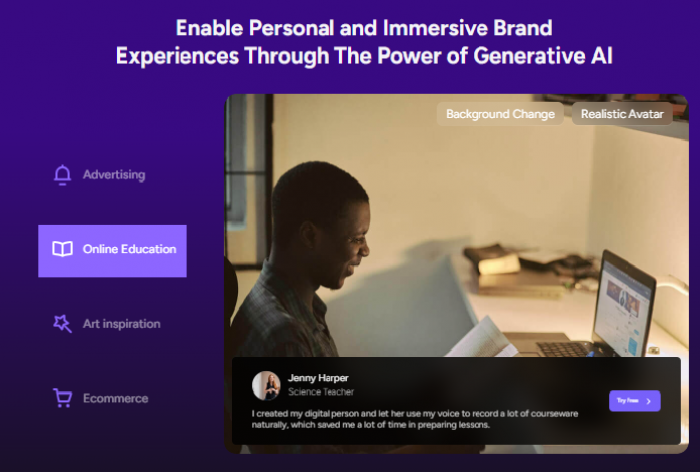
What made it even better was the accessibility — I didn’t just have to stick to my desktop. With Akool’s mobile apps available on Google Play and the App Store, I could work on projects on the go. That convenience was one of the biggest reasons I decided to try it out.
Who I Believe Akool AI Is Perfect For
In my experience, Akool AI doesn’t limit itself to one type of user. It’s versatile enough to help creators who want to make short-form videos, marketers who need polished ads, teachers who are producing e-learning content, and even enterprises looking for scalable video personalization.
For instance, a social media creator can use Akool to make interactive avatars for TikTok or YouTube, while a global brand can leverage its video translation tool to reach audiences in dozens of languages. That dual capability — personal projects and enterprise-grade campaigns — is what makes Akool stand out.
The Moment I Realized Akool’s Face Swap Isn’t Just a Gimmick
I’ll admit, when I first heard about face swapping, I thought it was just a fun gimmick. But the first time I tried Akool’s Face Swap, I realized how powerful it could actually be. It wasn’t just swapping faces for laughs — it created realistic transitions that felt professional.
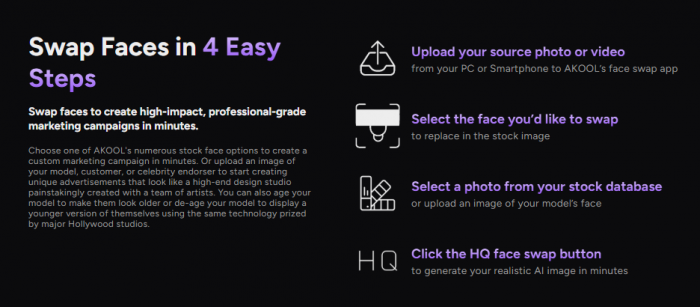
One campaign that inspired me was Qatar Airways’ “AI Adventure”, where they used face-swapping to engage audiences in a completely new way. That showed me this feature could actually transform marketing instead of just being a novelty.
Why I Trust Akool’s Talking Avatars for Brand Storytelling
When I tested Akool’s Talking Avatars, I noticed how natural they felt. These avatars blink, gesture, and even adjust their expressions depending on the script or audio. It’s not robotic; it feels surprisingly human.
I found it especially useful when creating explainer videos for clients. Instead of hiring presenters, I could use avatars that delivered the message clearly and engagingly. Even for interactive signage or customer support videos, the avatars made content feel more personal. It’s like giving a brand its own digital spokesperson.
How I Use Akool’s Video Translation to Reach Global Audiences
The feature that impressed me the most was video translation. With Akool’s Video Translation tool, I could convert my videos into 50+ languages — and the lip-sync matched the translated script perfectly.
For example, I repurposed one of my English videos into Spanish and Hindi, and the lip-sync accuracy was uncanny. What really stood out was how Akool preserved the tone of my voice, making the video sound authentic rather than robotic. For marketers and educators, this is huge because it breaks down language barriers without extra recording costs.
The Hidden Strength of Akool: AI Image & Video Generation
Another tool that quickly became a favorite was Akool’s AI Image Generator. I could generate custom visuals in resolutions up to 8K — something I usually expect from professional design teams.
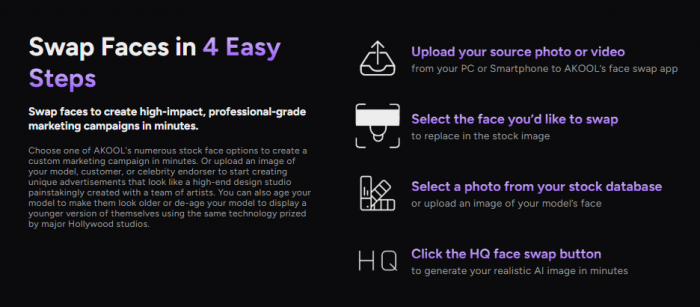
Beyond still images, the platform also let me animate static visuals into HD and 4K videos with effects, captions, and background music. That’s when I realized Akool wasn’t just about editing; it’s also about creating content from scratch without needing years of design skills.
How I Save Hours Editing With Akool’s Templates
One of the most time-saving features for me has been Akool’s AI Video Editor. I no longer spend hours cutting clips or adjusting green screens. The editor lets me remove or replace backgrounds instantly, add music, apply captions, and enhance visuals without any professional software.
The pre-designed templates are another lifesaver. For someone who isn’t a designer, I can still produce videos that look polished enough for client campaigns. This has been a huge help when I needed quick turnarounds.
When Akool AI Works Brilliantly (and When It Doesn’t)
After using Akool for weeks, here’s my honest breakdown:
Where it works brilliantly:
- It’s incredibly user-friendly — no steep learning curve.
- The multilingual support is unmatched for global campaigns.
- The output quality (8K images, 4K videos) makes it look professional.
- It saves both time and costs compared to traditional video editing.
Where it doesn’t always shine:
- The credit-based pricing can add up if you’re creating high volumes.
- I experienced performance lags during peak demand hours.
- The free features are a bit limited compared to premium tiers.
Testing Akool Against Other AI Tools – Where It Surprised Me
I’ve tried Synthesia, Pika Labs, and Runway ML, and while they all have strengths, Akool surprised me in some areas. For example, Synthesia is great for avatars, but it doesn’t offer the kind of face swap or multilingual lip-syncing Akool does. Runway ML is strong in editing layers, but Akool’s all-in-one approach makes it easier for smaller teams.
In short, Akool isn’t the absolute best in every single category, but it balances everything really well in one ecosystem, which for me is more valuable.
Can Akool Really Handle Enterprise-Level Demands? My Take
This was a big question for me — could Akool scale for bigger clients? Looking at its growth, with $40M in invoiced ARR and adoption by Fortune 500 companies like Amazon, Coca-Cola, and General Mills, the answer seems clear: yes.
In practice, I believe it’s well-suited for agencies and enterprises, but you do need to monitor credits and usage to avoid costs spiraling. For large campaigns, I’d recommend speaking directly to Akool about custom plans.
What Other Users Are Saying About Akool AI
It’s not just me — reviews on G2, Capterra, and Trustpilot also highlight similar pros and cons.
The positives:
- Most users praise its ease of use and the professional quality of the outputs.
- Many highlight its value in multilingual campaigns.
The negatives:
- Some find the pricing restrictive for heavy use.
- Others mention occasional lag or speed issues.
My Akool AI Workflow for Scaling Content Production
Here’s how I personally use Akool in my workflow:
- Write a script.
- Use Face Swap or Avatars for creative delivery.
- Translate it into other languages with lip-sync.
- Add final touches in the video editor.
- Export in HD or 4K.
This workflow allows me to create multi-language campaigns quickly and at scale, something that would otherwise take weeks with traditional teams.
Final Verdict – Is Akool AI Worth It for Me?
If you’re a creator, marketer, or global educator, I’d say Akool AI is absolutely worth testing. For me, its strength lies in how it combines face swaps, avatars, translations, and image/video generation into a single, seamless platform.
The only real drawback is managing costs if you’re a heavy user, but the free plan is a great way to test the waters. In short, it’s one of the most future-ready AI suites for anyone looking to level up visual storytelling.
FAQs From My Experience With Akool AI
Is the free plan enough for serious creators?
Yes, but you’ll likely need credits for larger projects.
Can I get enterprise-level customization?
Yes, Akool offers custom plans for agencies and Fortune 500-level needs.
Does Akool really output 8K visuals?
Yes, the image generator supports up to 8K resolution.
How reliable is its video translation in non-European languages?
Surprisingly accurate — I tested Hindi and Spanish, and both matched lip-sync well.
What’s the best way to manage credits as a high-volume user?
Track usage closely and consider upgrading to a plan that fits your campaign needs.
Post Comment
Be the first to post comment!
